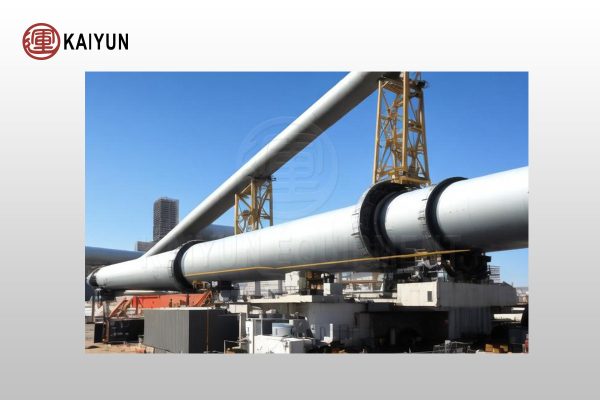Product Overview
The dry process rotary kiln, as a cornerstone of modern industry, is an essential core equipment in cement production, metallurgy, chemical processes, and environmental protection. Its ingenious structure and powerful functionality combine efficiency, energy savings, and environmental friendliness.
The dry process rotary kiln is widely used in various high-temperature calcination processes, such as the production of cement clinker, the roasting of bauxite, the calcination of limestone, and the manufacturing of advanced materials like lithium battery materials.
Table of Contents

Structure and Components
Kiln Shell and Lining
Kiln Shell
The main body of the rotary kiln is made from rolled steel plates.
Kiln Lining
Internally lined with refractory material to ensure stable operation under high temperatures.
Riding Rings and Support Devices
Riding Rings
Facilitate the smooth rotation of the kiln.
Support Devices
Precisely control the kiln’s inclination angle, ensuring uniform distribution and efficient flow of materials.
Drive System
Main Drive Motor
Provides the necessary power for rotation.
Main Reducer
Reduces the rotational speed from the motor.
Open Gear System
Ensures smooth and reliable power transmission.
Kiln Head Cover and Burner
Kiln Head Cover
Protects the equipment from external disturbances.
Burner
Supplies the high-temperature heat source required to drive chemical reactions.
Fume Chamber and Heat Exchange Device
Fume Chamber
Collects combustion waste gases.
Heat Exchange Device
Recovers heat to improve energy efficiency.
Feeding Equipment
Feeding Equipment
Precisely controls the amount of raw material introduced, ensuring continuity and stability of the production process.
Working Principle
The dry rotary kiln operates through three major stages: preheating, calcination, and cooling, transforming raw materials into finished products.
Preheating
Raw materials are preheated in a preheater to save fuel and enhance overall thermal efficiency.
Calcination
The preheated raw materials are then calcined at high temperatures of 1400-1500°C. This process induces chemical reactions to produce cement clinker.
Cooling
The clinker is rapidly cooled in a cooler, which stabilizes the product quality and recovers valuable heat.
Core Advantages
High Efficiency and Energy Saving
The dry rotary kiln boasts high thermal efficiency, significantly reducing fuel consumption.
High Degree of Automation
The integrated automatic control system simplifies the operation process and reduces maintenance costs.
Environmentally Friendly
The combination of preheater and cooler reduces waste gas emissions, aligning with green production principles.
Technical Parameters
| Specifications (m) | Φ2.8/2.5 * 44 | Φ3 * 48 | Φ3.2 *50 | Φ3.3 *50 | Φ3.5 *54 | Φ4 * 60 | Φ4.3 *64 | Φ4.8 *74 | Φ5.0 *74 | Φ5.6 *87 | Φ6.0 *95 |
| Production capacity (tons/day) | 300 | 600-700 | 1000 | 1200 | 1500-1800 | 2500 | 3500 | 5000 | 6000 | 8000 | 10000 |
| Kiln body slope (%) | 3.5 | 3.5 | 3.5 | 4 | 4 | 4 | 4 | 4 | 4 | 4 | 4 |
| Number of supports (pieces) | 3 | 3 | 3 | 3 | 3 | 3 | 3 | 3 | 3 | 3 | 3 |
| Wheel type | Mechanical | Mechanical/ hydraulic | hydraulic | hydraulic | hydraulic | hydraulic | hydraulic | hydraulic | hydraulic | hydraulic | hydraulic |
| Total weight (excluding refractory bricks) (tons) | 177 | 207 | 256.5 | 281 | 341 | 434 | 550.5 | 854 | 894 | 1201 | 1580 |
| Weight of kiln head cover (tons) | 20 | 22 | 25 | 27 | 28 | 35 | 36 | 45 | 48 | – | – |
